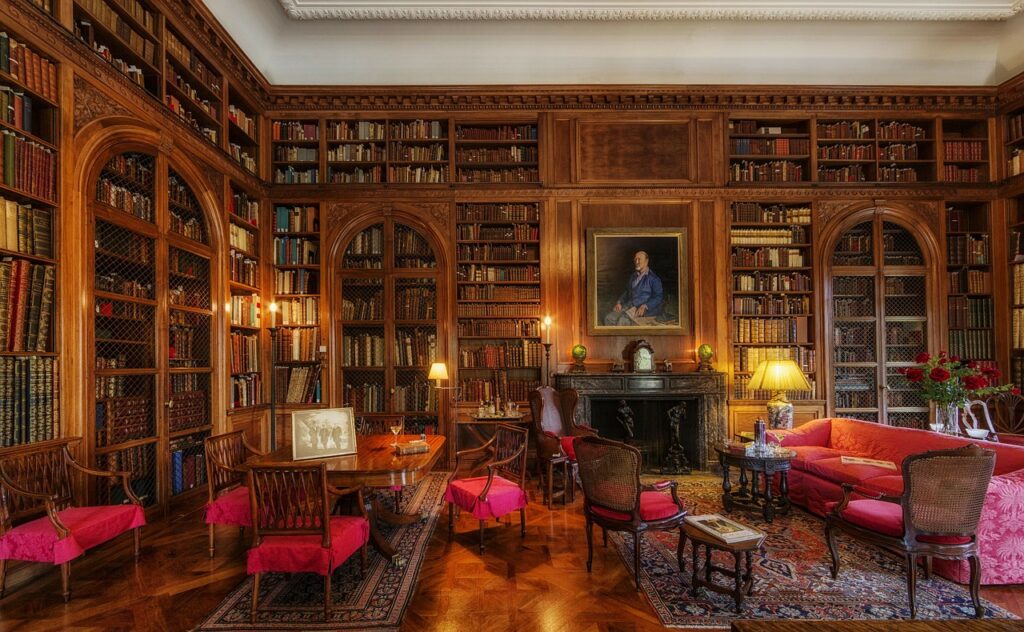Roofing isn’t just about shelter. It’s a testament to human ingenuity, adaptability, and our continuous quest for safety and comfort. Over time, as civilizations grew and technologies evolved, our roofing materials and methods underwent significant transformations. Here, we journey through time to explore the fascinating evolution of roofing – from the humble thatch roofs of ancient civilizations to the modern marvels that adorn our cityscapes today.
Table of Contents
The Humble Beginnings: Thatch Roofs
Before the technological innovations and advanced materials that define today’s world, humans depended on nature for almost everything, roofing included. Thatch roofs, made using dry vegetation like straw, water reed, or palm leaves, were popular. They were cheap, readily available, and provided decent insulation against both heat and cold. Even today, some traditional homes in rural areas around the world still sport thatch roofs, showing their timeless relevance.
The Stone Era: Slate and Tile Roofs
As human settlements grew into more sophisticated structures, the need for durable roofing arose. Slate, a fine-grained metamorphic rock, and clay tiles began to replace thatch, especially in regions where they were abundant. Not only were these materials more durable and fire-resistant, but they also offered a certain aesthetic appeal that royal and religious structures preferred.
Metal Takes the Spotlight: Bronze to Iron Age
The discovery of metalworking was a game-changer for many industries, including roofing. Copper, followed by lead, were among the earliest metals used for roofing. The Romans even used bronze and copper tiles on their majestic structures. By the time the Iron Age rolled in, corrugated iron sheets were in vogue, marking a significant leap in roofing technology.
The Modern Age: Bitumen and Shingles
The 19th and 20th centuries saw rapid industrialization, bringing with it new materials and methods. Bitumen, a sticky, black, and highly viscous liquid or semi-solid form of petroleum, became a popular choice. It was often used in conjunction with other materials to make roofing sheets. Asphalt shingles, too, made their grand entry during this period, offering an affordable yet durable roofing option for the masses.
Pushing the Boundaries: Green and Solar Roofs
In the 21st century, with rising environmental concerns and a push towards sustainability, the roofing industry saw yet another shift. Green roofs, where parts of the roof are covered with vegetation, became popular in urban areas, offering both insulation and a touch of nature. Solar roofs, which integrate solar panels directly into the roof, are also gaining traction, marrying functionality with energy efficiency.
As we reflect on the innovations of the past, Premier Group reminds us, “Roofing is not just about covering a space. It’s about adapting, innovating, and ensuring that every generation has a safer and more comfortable shelter.”
The Problem Today: Choice Overload
One of the challenges homeowners face today isn’t the lack of roofing options, but rather an overload of choices. With such a rich tapestry of materials, styles, and technologies available, it can be overwhelming to decide what’s best for one’s home.
Finding the Right Roof for You
To navigate this maze of options, here are some steps to consider:
- Climate Compatibility: Reflect on your region’s climate. A material that works well in a tropical climate might not be suitable for colder regions.
- Durability and Lifespan: While some materials like slate can last for centuries, others might need replacement in a few decades.
- Budget Considerations: From affordable asphalt shingles to more expensive copper or slate, pick what aligns with your budget.
- Aesthetic Appeal: Your roof is a significant part of your home’s visual appeal. Consider how different materials and styles fit with your home’s design.
- Environmental Impact: If sustainability is a concern, consider materials with a lower carbon footprint or those that provide energy savings, like solar roofs.
Beyond Aesthetics: The Age of Functionality
The era of the late 20th and early 21st centuries also marked the emergence of roofing not just as a shield or a style statement, but as functional contributors to a building’s efficiency. Cool roofing, made of materials that reflect more sunlight and absorb less heat than a standard roof, became an answer to urban heat islands, reducing energy costs and improving indoor comfort.
The Digital Influence: Smart Roofs
In the age of the Internet of Things (IoT) and smart homes, the roofing industry hasn’t remained untouched. Roofs today come equipped with sensors that can detect leaks, monitor structural health, and even gauge the efficiency of solar panels installed on them. This digitization not only ensures timely maintenance but also provides homeowners with real-time data about their roofs, adding another layer of convenience and safety.
The Renaissance of Traditional Materials: Back to Basics
In recent years, there has been a surge in the popularity of traditional roofing materials. This renaissance, driven partly by a global push for sustainable building practices and an appreciation for vernacular architecture, has put materials like clay tiles, thatch, and even wood shingles back in the spotlight. These materials are not just environmentally friendly but also have a unique aesthetic that modern materials often can’t replicate. The challenge lies in blending age-old techniques with contemporary needs to ensure durability and safety.
Customization and Personalization: Making a Statement
One can’t ignore the significant shift towards customization in almost every industry, and roofing is no exception. Homeowners today aren’t just looking for functionality and durability; they seek a personal touch that reflects their individual tastes and lifestyles. The industry now offers tailor-made roofing solutions ranging from unique color combinations, patterns, and even bespoke materials blended together. This era of personalized roofing allows homeowners to truly make their homes an extension of themselves, standing out in a neighborhood of similar structures. From vibrant colored shingles to intricate patterns, roofing has become as much about personal expression as it is about protection.
Conclusion
The world of roofing has evolved remarkably over the centuries. From basic thatch to sophisticated solar panels, each era brought with it innovations that catered to the changing needs and aspirations of society. Today, as we stand at the crossroads of tradition and innovation, the challenge is to make informed choices that offer the best blend of functionality, aesthetics, and sustainability. And in doing so, we continue the age-old human tradition of seeking better shelters for our future.


